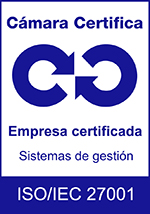Source: Enablon Insights. Translated by: Laragon
Companies that have sustainability, risk, EHS management on the same integrated software platform increase collaboration between the different functions and help make connections between reputational risks and sustainability initiatives that can help mitigate risks.
The 2018 State of Sustainable Business report where you can view the 10th annual BSR/GlobeScan Sustainable Business Leaders Survey provides insights into the world of sustainable business and identifies common perceptions and practices of corporate sustainability professionals.
One of the key findings of the report is that the priority issues covered by the corporate sustainability agenda are being driven more by risk management than by value creation.
It is important to distinguish between real priorities and what drives them. The top priorities of corporate sustainability agendas continue to be issues we would expect to see, such as climate change, human rights, ethics/integrity, inclusion, etc. But risk management is the underlying driver that pushes these issues to the top of the priority list.
Let’s take a closer look at how risk is a powerful driver of sustainability efforts. The survey included this question, “Which of the following are the most important drivers of your company’s sustainability efforts? “. Respondents were provided with a list of drivers and had to rank the three most important by entering 1, 2 or 3. Three drivers clearly emerged from the package to form a higher level (see page 16 of the report for details). They are the following in order of importance:
1) Reputational risks/benefits.
Mentioned as the top driver by 26% of respondents, and as the third best driver by 61%.
2) Consumer/customer demand.
Mentioned as the first driver by 16%, and as the third best driver by 47%.
3) Operational risks/benefits.
Mentioned as the first pilot by 13%, and as the third best pilot by 38%.
The highest point of reputational risk for drivers could be explained by the convergence of ethics, integrity and sustainability. Ethical issues have historically been handled by compliance and legal teams, but “uncertain and inconsistent regulation means that legal risk is no longer a good indicator of reputational risk,” the report says.
The need to mitigate reputational and operational risks is clearly the underlying catalyst fueling many sustainability initiatives. For many organizations, corporate sustainability is an additional vehicle through which risks are reduced. It should be noted that corporate sustainability is not the only vehicle for risk reduction, but one vehicle among many (e.g., EHS management or operational management).
This also explains why investors are focusing more on ESG factors. It is not only because they want to invest in companies that are “doing good,” but also because a company’s sustainability performance is a good indicator of its ability to mitigate risks and achieve resilience.
The convergence of corporate sustainability and risk management has two consequences. First of all, there must be a increased collaboration between the sustainability and risk management functions. Secondly, sustainability, risk and EHS management on the same integrated software platform. Having everyone in the same system increases collaboration between the different functions and helps to establishing linkages between reputational risks and sustainability initiatives that can help mitigate risks. Goldcorp, one of the world’s leading gold producers, is an excellent example of a company that manages sustainability, risk and EHS on the same platform.
In conclusion, organizations must go beyond simply managing sustainability, risk, environment, health and safety and operations. They should also actively seek synergies between all functions. These synergies are often the ones that generate the most benefits.
“the priority issues covered by companies’ sustainability agenda are being driven more by risk management than by value creation.” – Enablon



